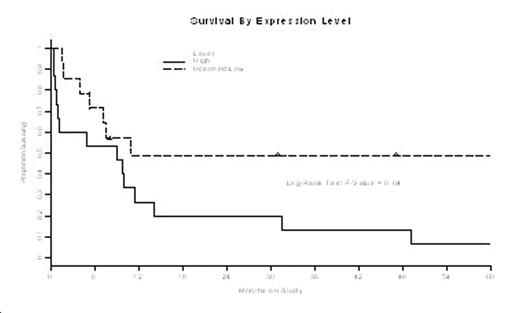Abstract
Leukemia is a neoplastic proliferation of cells of hematopoietic origin that arises following somatic mutation in a single hematopoietic stem cell, the progeny of which forms a clone of leukemia cells. Genetic alterations leading to leukemia transformation of a cell are often associated with major alterations of chromosomes that can be detected by studying cells of the leukemic clone in mitosis. One of these alterations is a chromosomal translocation that is often used to identify genes potentially involved in other type of rearrangements such as deletions. Abnormalities of chromosome band 13q14 occur in hematologic malignancies of all lineages and at all stages of differentiation. Unlike other chromosomal translocations, which are usually specific for a given lineage, the chromosomal translocation t(12;13)(p12;q14) has been observed in both B-cell and T-cell precursor acute lymphoblastic leukemia (ALL), in differentiated and undifferentiated acute myeloid leukemia (AML) and in chronic myeloid leukemia at progression to blast crisis (CML-BC). Recently, we have shown the presence of a myeloid- and lymphoid-specific breakpoint cluster regions within chromosome band 13q14 in acute leukemia (Genes Chromosome Cancer 25:222–229,1999). In addition, a new cell line has been established from one of the lymphoid cases, MUTZ5, that carries a single t(12;13) translocation (Leukemia 15:1471–1474, 2001). The molecular characterization of this translocation led to the identification of a new gene, FLJ13639, that is disrupted and lost in the MUTZ5 cell line. This gene shares homologies with the large family of short-chain dehydrogenase reductase (SDR). Furthermore, three transcripts and proteins were found to be differentially expressed for this gene, where P1 is potentially the active form of dehydrogenase, while P2 and P3 are lacking the co-activator site. We report here that one of the consequences of the loss of FLJ13639 is the over-expression of CD24 that appears to provide leukemia cells with a proliferation and invasiveness advantage, as well as a certain degree of chemoresistance. FLJ13639 is a new mitochondrial protein that seems to be important for the respiration and apoptosis processes. In addition, semi-quantitative RT-PCR for CD24 and FLJ13639/P1 was performed in a series of cell lines as well as 29 adult ALL samples at diagnosis. Fifty percent of the samples showed a CD24High / FLJ/P1Low profile whereas the remaining samples showed either a balanced expression or a CD24Low / FLJ/P1High profile. These preliminary data on patient samples indicated a correlation between survival and CD24High / FLJ/P1Low expression profile (p=0.04). The current median time survival for the CD24High / FLJ/P1Low group is 9 months whereas the CD24Low / FLJ/P1High group is 28 months. Therefore, this appears to be a new potential prognostic marker for adult ALL.
Author notes
Corresponding author


This feature is available to Subscribers Only
Sign In or Create an Account Close Modal